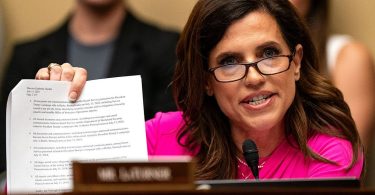Twenty-seven states and Washington, D.C., have banned efforts to change sexual orientation, commonly but mistakenly referred to as “conversion therapy,” for minors on the premise that therapies seeking to mitigate or resolve unwanted same-sex attraction are inherently harmful and increase the risk of suicide.
Father Paul Sullins, a Roman Catholic priest, senior research associate at The Ruth Institute, and former sociology professor at Catholic University, found that the opposite is true, however.
Not only is there no evidence that efforts to change sexual orientation, which Sullins refers to by the acronym SOCE, increase the risk of suicide among those who identify as lesbian, gay, or bisexual. There also is evidence that such efforts actually decrease the risk of suicide or thoughts of suicide among them.
“What we’re left with is a situation where we’re being fed a lie that somehow attempting to change sexual orientation is going to fail all the time and it’s going to cause harm, and the truth is just the opposite,” Sullins tells “The Daily Signal Podcast.”
Sullins analyzed the data from a study conducted in 2020 by University of Southern California health researcher John Blosnich. The study, “Sexual Orientation Change Efforts, Adverse Childhood Experiences, and Suicide Ideation and Attempt Among Sexual Minority Adults, United States, 2016–2018,” published in the American Journal of Public Health, used data collected by the Gallup Organization.
Gallup called over 330,000 Americans to screen about 3,000 who identified as LGB and then collected 1,500 interviews on the issue, yielding what Sullins described as “very precise data on this particular question.”
“With that data, they correlated the amount of suicide ideation—thinking about suicide and other suicidal behaviors,” such as making a plan to commit suicide or suicide attempts, Sullins explains. “They correlated those with whether a person had ever been to SOCE and found that person who had been to SOCI had over twice the rate of suicidal thoughts and were 1 .7 times as likely to attempt suicide.”
“On the basis of this, calls for banning SOCE were moved forward, and we got into the situation we’re in today,” the sociologist explains.
Yet it seems the researchers made an elementary mistake in analyzing the data; Sullins caught the mistake because Blosnich and his colleagues published the interviews along with the study.
“I got the data and looked at it and I found that they had ignored one very crucial question, which was, ‘When did you think about suicide?’” Sullins recalls.
When he read the interviews, he looked to see “whether the suicide activity happened before or after the person went to SOCE, and what I found, somewhat to my surprise, was that most of the suicidal behavior happened before the person ever went to SOCE. Two-thirds of the thoughts of suicide happened before they ever went to SOCE.”
“Now, you know, it’s logical that if someone engages in a behavior and then goes through an experience, later, that that experience could not have caused that preexisting behavior,” Sullins explains. “Things don’t work backward in the space-time continuum.”
“So I published a firm rebuttal to that study finding not only that did SOCE not increase suicidal behavior, it decreased it,” he says.
Critics attempted to silence his study’s findings.
“Even if my study was true, they claimed it was unethical to publish it because it implied that somehow people needed to be fixed, and it would impede the cause of gay rights,” Sullins says.
Although Sullins is Roman Catholic and believes same-sex activity to be sinful, he says he doesn’t encourage lesbians, gays, or bisexuals to try to change their sexual orientation unless they feel uncomfortable about that orientation. He says that sexual orientation change efforts don’t always work, but his studies find that they do succeed, to some degree.
“I’ve done other studies that show that when people attempt to change sexual orientation, it is fully successful in my studies about 17 to 20% of the time,” he recalls. “Most persons who undergo it, meaning about 60 to 65%, report that they are less caught up in homosexual attractions and behaviors and activity.”
Sullins noted that about 30% of the 1,500 lesbians, gays, and bisexuals in Blosnich’s study said that they have tried to change their sexual orientation, and about 10% said, “If I could be completely heterosexual, I would want to do that.”
“So there is a minority of the gay population who wants to change, is not happy with living the way that they’re living, however you want to say that, and wants to change,” Sullins notes. “Those are the ones who ought to have the option for counseling and therapy if they want it.”
Sullins-2022-vs-Blosnich-2020-Do-sexual-orientation-change-efforts-SOCE-increase-suicidal-risk-for-sexual-minorities-an-exchangeDownload
The sociologist also says that his studies show sexual attraction is variable and complex.
“If you measure those things separately, you’ll find that across the range of humans, variation, there are a number of people who have moderate to high levels of same-sex attraction and moderate to high levels of opposite-sex attraction that coexist,” he explains.
“What often happens when persons go through SOCE or attempt to what we call change their sexual orientation is that—not so much that the same sex attractions diminish, that can happen—but it’s much more common that those don’t diminish or diminish very much, but the opposite-sex attractions become more salient and a person is able then to live more out of their opposite-sex-attracted side, we might say, than the same-sex-attracted side,” Sullins says.
The sociologist goes on to describe how some in the scientific community have attempted to stifle his research.
“In a way, I find it an encouragement and a compliment when a study of mine is being suppressed,” he says. “Because if they had an argument against what I was publishing, if they found a flaw in it, they would make that note. But the fact [is] that they don’t do that, instead they want to suppress citations, as you can do in the scholarly world, or they want to make sure it doesn’t get published in journals that are read more widely.”
Sullins also describes having a venue cancel a presentation on his research.
“When they canceled like that, it says to me that they don’t really have an argument on the other side,” he says. “They want to control us by censorship and by controlling the way that we think. Well, as an American, I don’t take well to that kind of control.”
Listen to the podcast interview with Sullins below.
Have an opinion about this article? To sound off, please email [email protected], and we’ll consider publishing your edited remarks in our regular “We Hear You” feature. Remember to include the URL or headline of the article plus your name and town and/or state.






